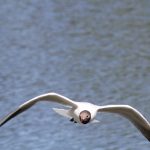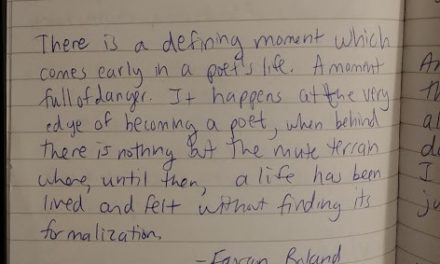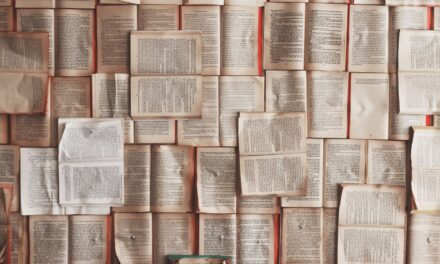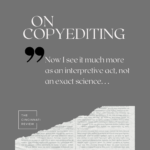Poetry editor Don Bogen, who has been off fellowshipping at the Heaney Centre in Belfast for what seems (to our lonesome staff) a great age, is soon to fly back to us. Appropriate, then, that his last across-the-pond post takes, as its topic, birds.
Don Bogen: A word about birds. They seem especially noticeable here, perhaps because we’re close to the river Lagan, which opens into the Irish Sea at Belfast Lough and, in the other direction, winds some dozen miles through a nature preserve along an old canal path to the former linen-mill town of Lisburn. Gulls of various species hover over our narrow street, particularly o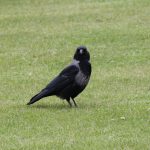 n garbage day. Along the canal path, you see more gulls, ducks, coots, moorhens and herons. As for land-oriented birds, magpies are ubiquitous and striking in their black, white, and glinting blue plumage. They look elegant but sound like ratchets—the Spanish word for them, urracas, is onomatopoetic. The crow of Ireland is the hooded crow—not completely black but with a grayish torso and black wings and head. A sturdy, good-sized creature, it looks like a raven wearing a vest. It sounds, well, like a crow. But the real singers here are the blackbirds—too small and plain to notice much, but you do hear them. Their call is rich, lyrical, and varied, like a musical conversation.
n garbage day. Along the canal path, you see more gulls, ducks, coots, moorhens and herons. As for land-oriented birds, magpies are ubiquitous and striking in their black, white, and glinting blue plumage. They look elegant but sound like ratchets—the Spanish word for them, urracas, is onomatopoetic. The crow of Ireland is the hooded crow—not completely black but with a grayish torso and black wings and head. A sturdy, good-sized creature, it looks like a raven wearing a vest. It sounds, well, like a crow. But the real singers here are the blackbirds—too small and plain to notice much, but you do hear them. Their call is rich, lyrical, and varied, like a musical conversation.
The blackbird is the symbol of the Seamus Heaney Centre. The founding director, the poet Ciaran Carson, came up with this idea on his way to the interview for the position. He told us that he was nervous about getting the job—there are a lot of poets and folks like him with arts administration experience in Belfast—and just as he was about to enter the building, a blackbird came out of the hedge and sang to encourage him. There’s a lovely medieval Irish poem about the bird, found in the margins of an illuminated manuscript (those monks would get tired of copying the Gospels), which Ciaran has translated this way:
the little bird
that whistled shrill
from the nib of
its yellow bill:
a note let go
o’er Belfast Lough –
a blackbird from
a yellow whin
“Whin” is the gorse that flowers in March and April.
Ciaran is prominent among a generation of Irish poets now in their late fifties and early sixties who were at Queen’s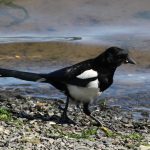 University when Seamus Heaney taught here—including his Centre colleague Medbh McGuckian, Paul Muldoon, and Frank Ormsby—but he is also a traditional Irish musician, playing various flutes and whistles. Music forms an important part of the Centre. The singer and scholar of Irish folk song Pádraigín Ní Uallacháin is also on staff; she keeps discovering Irish songs that Ciaran translates and she sets to music. Ciaran and his wife Deirdre, who plays fiddle, take part in a regular session at a local pub. The scene there is hardcore traditional: The musicians have a corner table and play basically for each other—no stage, little applause. Newcomers are welcome to watch, but there are strict protocols about who can sit in. First you just leave your instrument case out to let folks know what you play. Then, maybe after two or three weeks of listening, you might open the case. But you never pick up the instrument until you’re invited, and that would be after at least a month.
University when Seamus Heaney taught here—including his Centre colleague Medbh McGuckian, Paul Muldoon, and Frank Ormsby—but he is also a traditional Irish musician, playing various flutes and whistles. Music forms an important part of the Centre. The singer and scholar of Irish folk song Pádraigín Ní Uallacháin is also on staff; she keeps discovering Irish songs that Ciaran translates and she sets to music. Ciaran and his wife Deirdre, who plays fiddle, take part in a regular session at a local pub. The scene there is hardcore traditional: The musicians have a corner table and play basically for each other—no stage, little applause. Newcomers are welcome to watch, but there are strict protocols about who can sit in. First you just leave your instrument case out to let folks know what you play. Then, maybe after two or three weeks of listening, you might open the case. But you never pick up the instrument until you’re invited, and that would be after at least a month.
We were down at the place a while back to hear Ciaran and Deirdre. He came over during a break, and talk turned, as it often does here, to poetry. You know, he said, we poets all want to sing like nightingales—or maybe skylarks. Yeah, we all want to be skylarks. I blurted out Shelley’s skylark line, “Bird thou never wert,” and Ciaran continued, But you know what we really are? We’re fuckin’ parrots, man. That’s as eloquent a statement about music and literary tradition as I can think of this side of “Tradition and the Individual Talent.”

